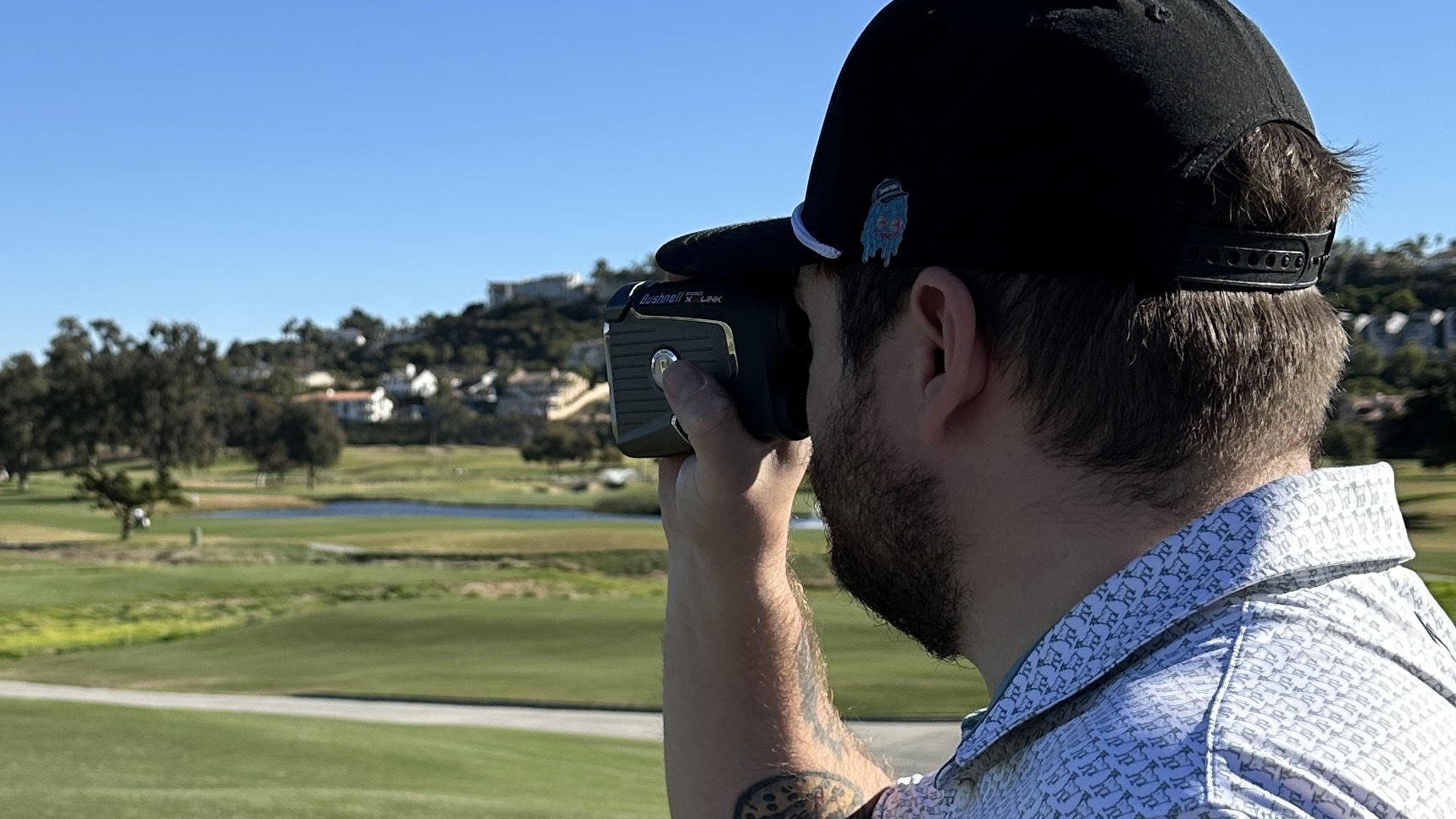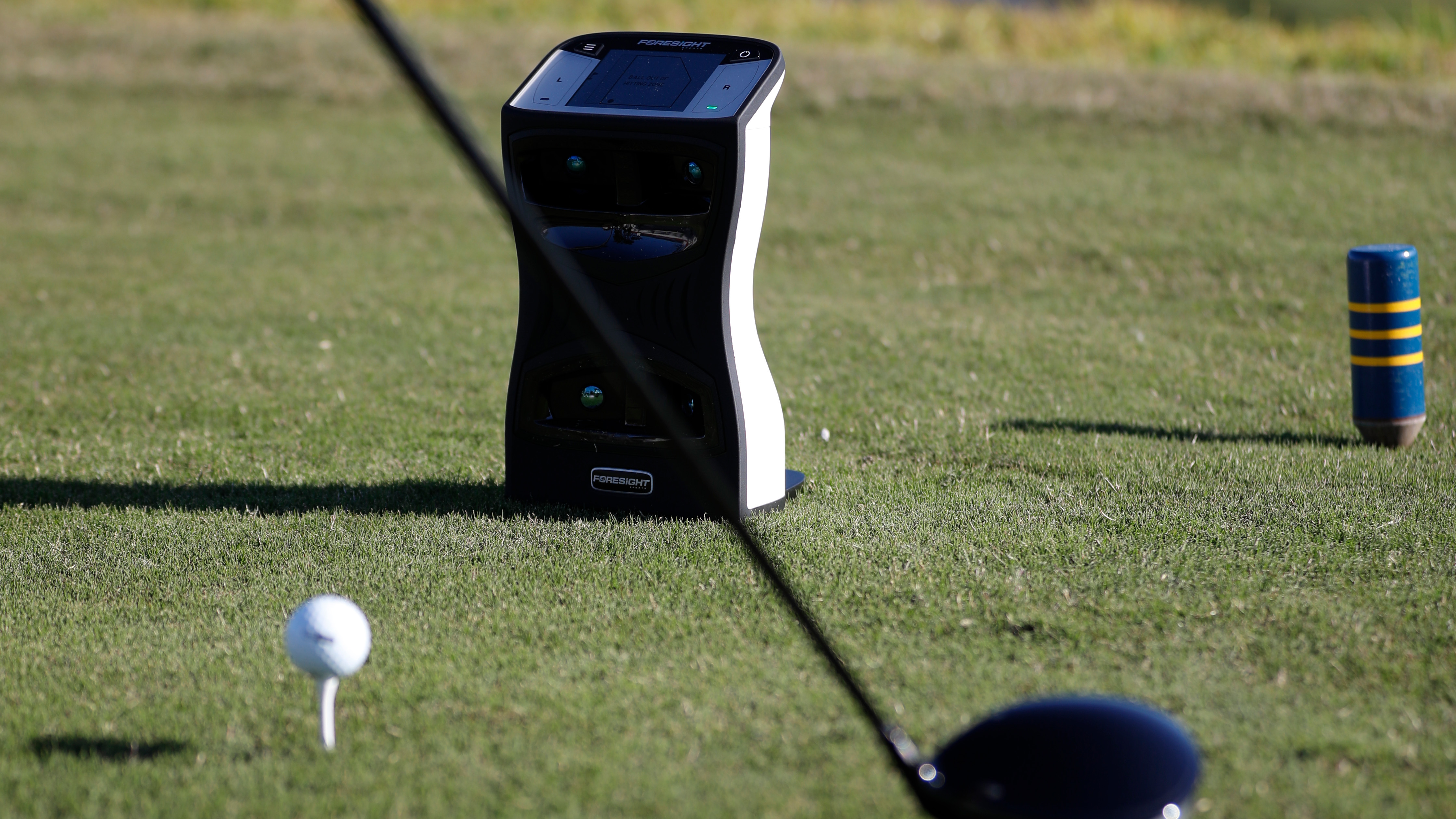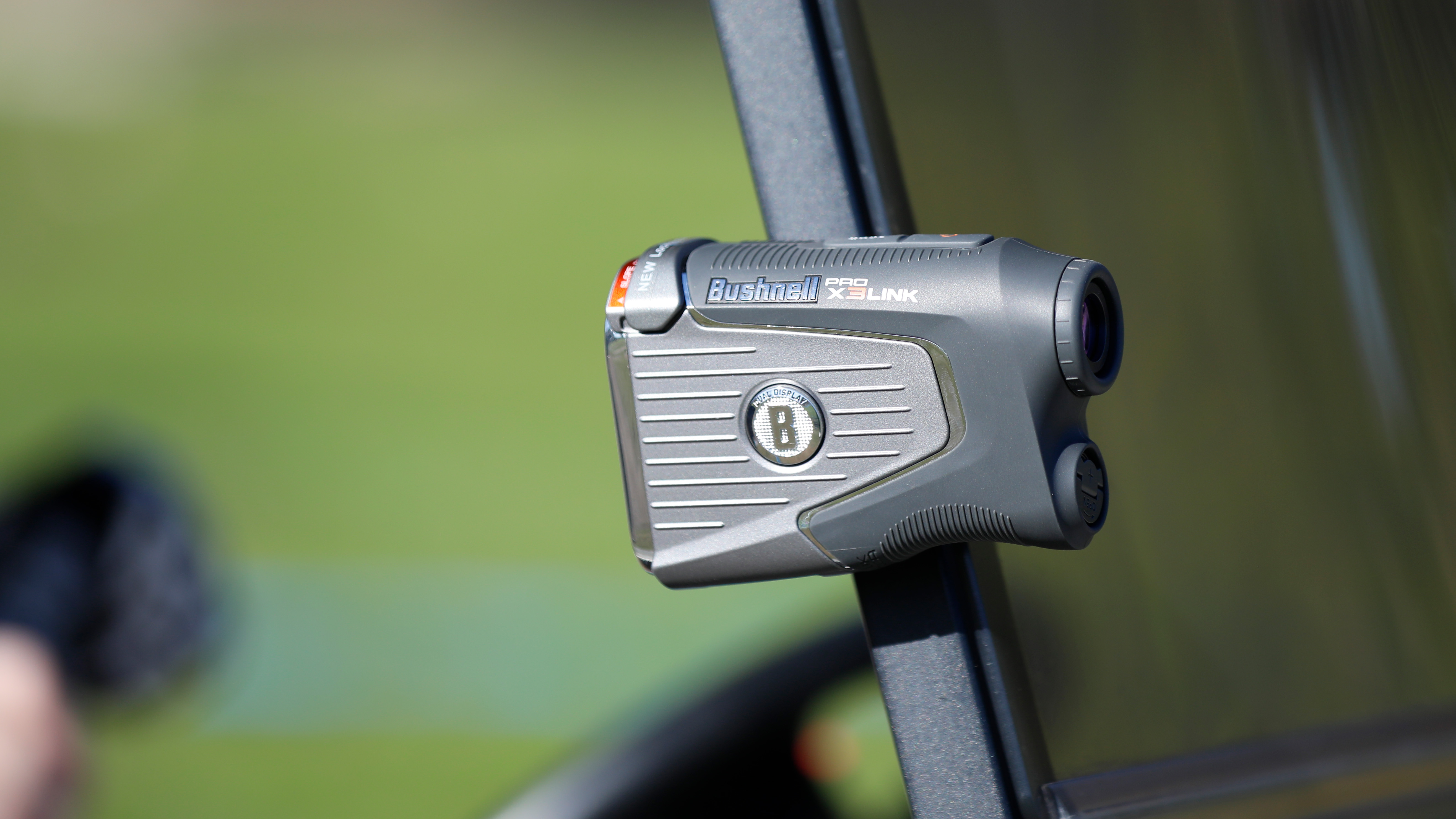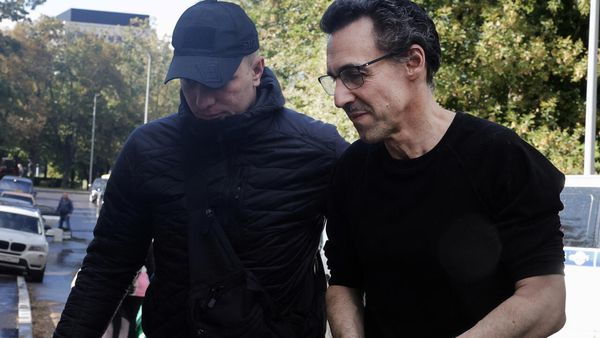
Golf is a fast-moving industry, with new products launched throughout the year. Between brands like Callaway and TaylorMade launching new clubs and apparel companies like SwingJuice and Greyson dropping stylish shoes and clothing, there's always something new to buy. And don't even get me started on all the golf deals to be had out there.
But now and then, a new golf product makes me stop and take notice. Foresight Sports’ new Link Enabled technology featured in Bushnell's new Bushnell Golf Pro X3 Link rangefinder (and Foresight's line of launch monitors, including the new GC3S) combine to help you make better decisions on the golf course by choosing the right club for the current distance.
And club selection isn't just based on how far you hit each one. Instead, the technology uses dispersion numbers to guide you toward the club that is most likely accurate in the current situation based on dispersion numbers discovered during your shot assessment on the rangefinder.
It sounds cool so I flew to sunny Carlsbad, Calif., to test the rangefinder and launch monitor and find our how they work together at Foresight's headquarters and the gorgeous Omni La Costa Resort & Spa North Course.
Launch monitor required

The first thing to note about this incredible technology is that it's not cheap. You'll need access to a Foresight launch monitor and the Bushnell Golf Pro X3 Link rangefinder. The Foresight Sports GC3S with the laser rangefinder costs $3,799 (plus a $499 annual software subscription), which sounds like a lot. And it is. It is substantially cheaper than other launch monitors from the company, especially considering that the rangefinder costs around $600.
You can also buy the current GC3 for $6,999, which includes the device with ball & club data, a Bushnell Golf Pro X3 LINK laser rangefinder, a sling bag, a 2-year warranty, and one year of access to the company's premium software.
Thankfully, Foresight intends to work with retailers to let you do the club assessment without owning a launch monitor for yourself (or needing to fly to the company headquarters in California).
The assessment
Getting your club distances with the Foresight assessment is relatively easy. You need to take at least three shots with each club to give the evaluation an idea of your distances and dispersion pattern. Only taking three shots feels a little low, especially for lower-skill golfers, whose shots tend to be all over the place.
Despite my trepidations, I hit my three shots (or more if I chunked or topped one, as I deleted those to get three decent hits). As a long-time Arccos user, which I've hailed as one of the best golf apps for Apple Watch, I have a decent idea of my total distances on the course (it only measures the point you shoot from to your next shot, so it doesn't know carry distances).
With that knowledge, I was pleasantly surprised at how accurate the distances were. Every club was about 10 yards shorter than my Arccos distance, which is what I would expect since this measures carry, not total distance.
Three realistic shots give the launch monitor and range finder enough data to do the job accurately. You can undoubtedly hit more to get an even more precise number, but if you don't own a Foresight launch monitor, it's nice to know that you can hit a few shots in the store and take full advantage of the Link technology.
How useful is the data on the course?

While the distance and dispersion assessment is cool, the on-course recommendations make this system feel like cheating. As mentioned, I'm used to having distance recommendations from Arccos, but there are a few things that make the rangefinder better:
- Carry distance: While Arccos tells you how far the club goes, it doesn't tell you how far the club carries versus how far it runs out. If there's a bunker just short of the green and you know your seven iron goes 140 yards, do you know if it'll carry the bunker? Knowing your carry distance instead of your total might tell you to pull out the six iron so you can clear the bunker instead of landing in it. The closer you get to the green, the more those tiny distances matter.
- Dispersion: Knowing your distances will let you decide how far a club goes, which is nice. But knowing your dispersion pattern lets you see how likely a club is to land where you want it to. Maybe your five iron would go one distance, but it's less accurate and more likely to end up in the rough. Clubbing down. to your six iron might take some distance off, but if it has a smaller dispersion, it's more likely to hit the fairway. With Bushnell and Foresight's data, you can see all that and make smarter decisions.
- Actual distance to pin: This applies to all range finders compared to GPS apps, but you get the actual distance to the flag instead of front, center and back of the green distances. This extra precision can change the club you use and can save you a couple strokes.
All of those bits of information translate to better decision making on the course. Club selection and course management is a huge part of golf. Having extra knowledge can improve your scores.
Am I converted to rangefinders?

As an Arccos user who has relied on the platform since I started golfing, I'm a rangefinder convert as a supplement to Arccos. I'm not getting rid of Arccos, as I still think the insights and stats it provides are invaluable.
I am, however, going to use a mixture of the Arccos, the Bushnell app and the Bushnell Golf Pro X3 Link rangefinder to help me make the best decisions. Knowledge is power, and I don't see a reason to choose between these incredible things when I can use both.
Arccos makes scorekeeping easier and helps me track my stats and goals. Bushnell gives me more precise distances, recommendations and dispersion patterns. With their powers combined, I feel like a better golfer.
If my swing could be as proficient as my course knowledge, I might be a halfway decent golfer.







